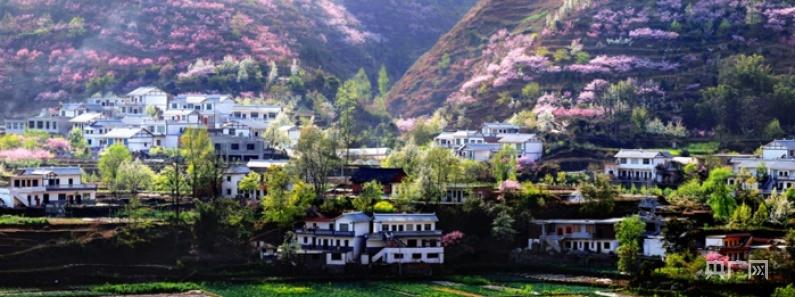
A view of the Taohua(“Peach Blossom”)Hillsin the Baiche(“Hundred Waterwheels”) River Scenic Area inLiupanshui city, Guizhou province (LiupanshuiPublicity Department via CNR.cn)
A total of 9.23 million residents of Guizhou province have emerged from absolute poverty since the 18th National Congress of the Communist Party of China convened in late 2012.No longer a major battleground in the country’s campaign to end poverty, the administrative areais currently embarking on arural vitalization journey.
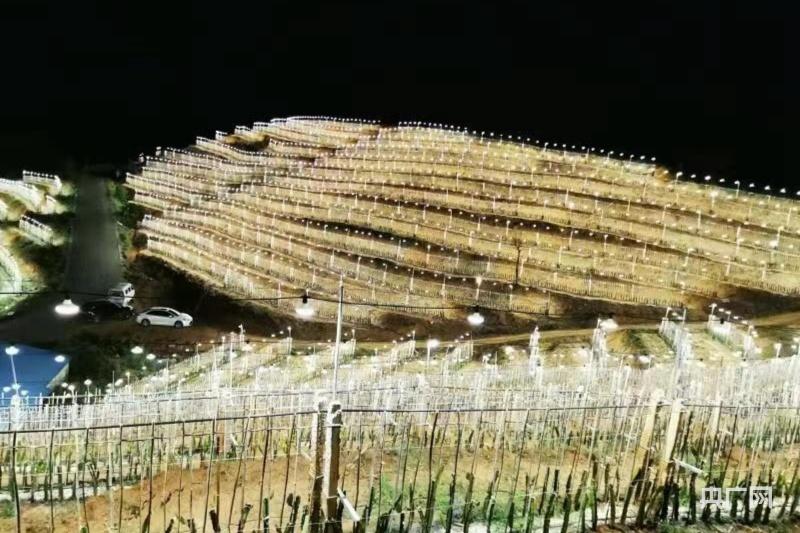
A view of the high-densitypitaya farming base in Bacao village, Liangtiantownship, ZhenningBouyei and Miao Autonomous County,Anshun city, Guizhou province. The artificial lighting that has been installed at the site helps improve quality and yields. (ZhenningPublicity Department via CNR.cn)
In recent years, Liangtian township, Zhenning Bouyei and Miao Autonomous County, Anshun city, Guizhou province,has been taking advantage of its favorable natural environment by vigorously pursuing high-densitypitaya farming.The administrative areacurrently engages in high-quality, high-yield productionwith the aid of artificial lightingon more than 26.67 ha of land.
Liangtian official Xia Chirecently mentioned thatthe approach has resulted in annual outputrising from more than7,500 kg per ha to a minimum of 45,000 kg per ha.He explained that the pitayas that are grown in the township bear fruitthe year they are planted and reach full capacity the following year and noted that these milestones are attaineda year earlier than when traditional farming techniques are used.
Specially customized by the manufacturer based on research data, the lighting systems that have been installed at Liangtian’s pitaya farms facilitateadditional photosynthesis in the fall, winter, and spring by simulating and extending afternoon and evening lighting conditions,which increases the number of harvests that can be achieved from the usual six that are possible between Juneand October in Guizhou to eight betweenJune and January.
Liangtian’s pitaya farms also promote the integrated development of agriculture and tourism in the township.The facilities attract numerous visitorswho are eager to see views similar to galaxies when they light up at night and enjoy ecotourism and rural lifestyles.Situated 520 m above sea level, the pitaya production base in Bacao village hasbecome a popular tourist destination that iswell-known online. Its elevation provides it with additional meaning, as “520” is an existing slang term for “I love you” in Chinese due to the fact that it is roughly homophonic.
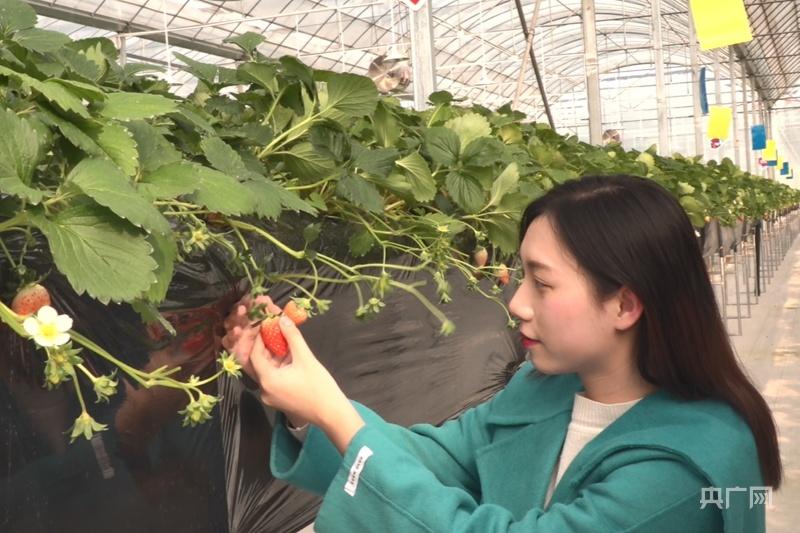
A tourist from centralGuiyang picks strawberries at the Qianfeng ecological base in Shiban township in the city’sHuaxi district. (Ren Zhenguo/CNR.cn)
Guizhou has experienced great results with efficient characteristic modern agriculturein its mountainous regions. It produced, processed, and sold more chili peppers than any other provincial-level administrative area; grew tea, blueberries, and plums on more land than any other provincial-level administrative area; and was one of the top-three provincial-level producers of kiwifruit, coix seed, prince ginseng, and other cropsin China.
Located on the Yunnan-Guizhou Plateauamid the watershed between the Yangtse River and the Pearl River in the heart of central Guizhou, Guiyang cityserves as the province’s capital. Known as the “pearl of the plateau,” the city’s Huaxi district features a lush ecological environment that makes it possible for it to produce high-quality agricultural products and contributes to its status as a popular scenic tourist area.
Huaxi currently producesapproximately 4,500 tons of strawberries on over 200 ha of land per year for 250 million yuan (US$39.28 million) of output value. A total of 150 farmer households are involved directly,1,100 people workyear-round in the industry, and 130,000 man-days of additional work are available annually. The opportunitiespaya total of more than 20 million yuan (US$3.14 million) of wage income.
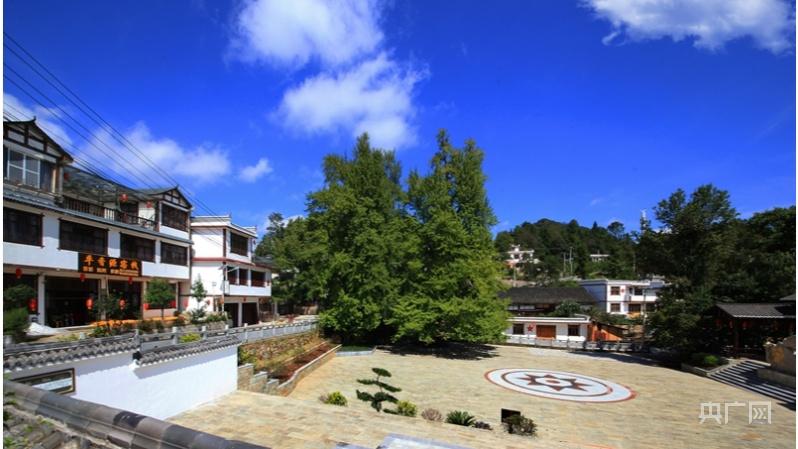
A view of Damu village, Liutun town, Xiuwen county, Guiyang city(Xiuwen Convergent Media Center via CNR.cn)
Designated a“beautiful leisure village”byChina’s Ministry of Agriculture and Rural Affairs in 2021, Damu village, Liutun town, Xiuwen county, Guiyang city, has an annual average temperature of 13.8 degrees Celsius,and more than75 percent of its territory is covered by forests. Its ethnic Dong minority culture and pleasant climate have contributed to it becoming a popular tourism destination as well as the fact that it is easy to get to.
Damu resident Li Xiaofeng sells snacks and bottled water at a small convenience store located on the ground floor of the building that she lives in and runs a farm stay business.Her guests have the opportunity to enjoy the village’s specialties while staying with her, includingthe rice wine that she began producing after she started experiencing success withtourism.
“My farm stay is full most of the year,” Limentioned recently.“My family currently makes more than 100,000 yuan (US$15,710) from agritourism and rice wine sales per annum.”
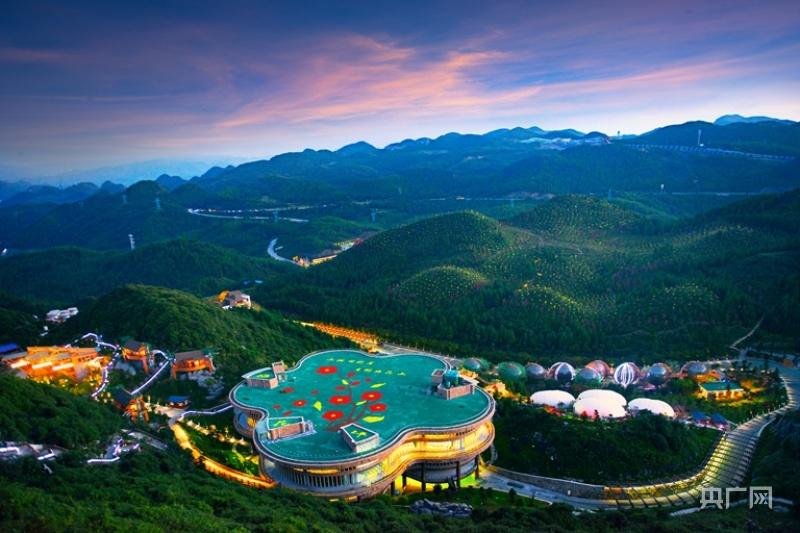
A view of the Meihuaping (“Plum Blossom Plateau”) section of the Meihua Mountains Scenic Area in Liupanshui city, Guizhou province(Liupanshui Publicity Department via CNR.cn)
Located less than 200 km west of Guiyang, Guizhou’s Liupanshui city featuresa 56.94-percent forest coverage rate, beautiful scenery,andan average temperature of 19.7 degrees Celsius in the summer. The administrative areawas designated a“cool city” by the Chinese Meteorological Societyand one of China’s top-10 summer resort cities by the China Tourism Academy based on its attractions and its pleasant climatein 2019.
In recent years, Liupanshui has beenvigorously developing its tourism industry and making efforts to offer attractions throughout the year. For example, visitors can appreciate plum blossoms in the spring, escape from the heat in the summer, experience leisure tourism in the autumn, and go skiing in the winterat the Meihua Mountains Scenic Area in Shuangjia Township, Zhongshan District.
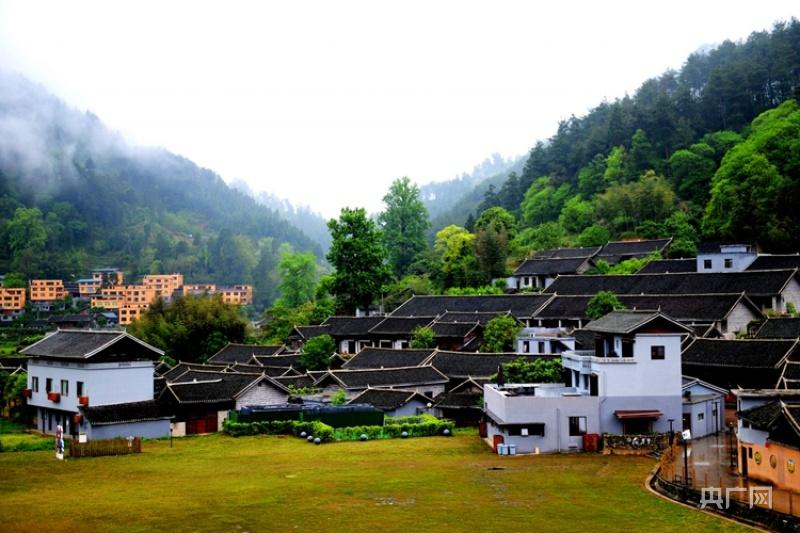
A view of a traditional ethnic Dong village in Xieqiao subdistrict, Wanshan district, Tongren city, Guizhou province, known as Yaxi(Xiao Hao/CNR.cn)
A traditional ethnic Dong enclave, Yaxi village,Xieqiao subdistrict, Wanshan district,Tongren city, Guizhou province,features wooden homes that are hundreds of years old and preserved stone walls that are overa thousand years old.In September 2019, the hamletbegan renovating more than 100ethnic Dong buildings and transforming them into guesthouses and buildingan ecological farmwhere vegetables,melons, and other fruits are produced as part of a plan to take advantage of its bodies of water, fertile environment, and ethnic cultureby pursuing agriculture and tourism.
One hundred seven Yaxi households have increased their incomes by an average of more than 18,000 yuan (US$2,828)by leasing out their homes and land usage rights and by pursuingother income streams, and more than 80 people who live in the area currently work at the farm.
Guizhou plans to help 200 of its traditional and ethnic minority villagestransform themselves into rural tourism villages that are recognized at the provincial level or higher during the 14th Five-Year Plan period(2021-2025) in order to promote the high-quality development of the tourism industryand overall vitalization now that they have escaped from poverty.Agriculture, tourism, and cultureare being harnessed and developed in an integrated manner that highlights the unique charmand customs of the poetic villages and their scenic natural environments.